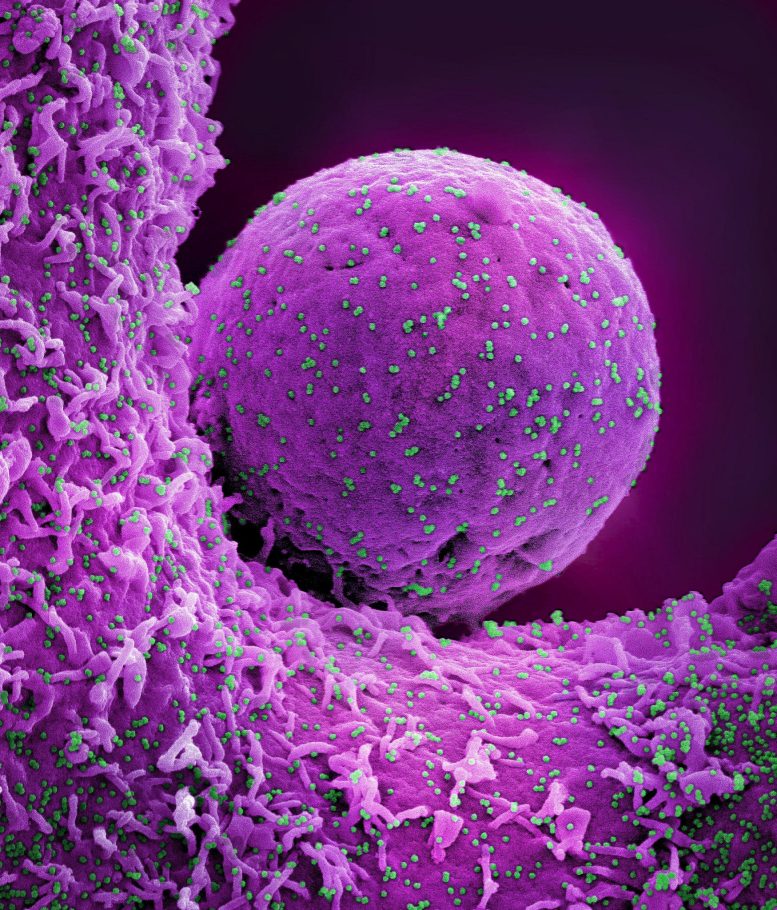
Recent findings shed light on why younger children exhibit fewer severe COVID-19 symptoms compared to adults. The study observed that infants and young children who contracted SARS-CoV-2 had a strong, sustained antibody response to the virus and high levels of inflammatory proteins in the nose but not in the blood. This immune response contrasts with that typically seen in adults with SARS-CoV-2 infection. Co-funded by the National Institute of Allergy and Infectious Diseases (NIAID), part of the National Institutes of Health, the research appears in the journal Cell.
Study Methodology and Participants
The investigation involved 81 full-term infants and young children whose mothers enrolled in a NIAID-supported cohort study at Cincinnati Children’s during their third trimester of pregnancy. The study team trained mothers to collect weekly nasal swabs from their infants starting when the babies were 2 weeks old. The team also drew blood from the babies regularly, starting at age 6 weeks, as well as when the children became infected with SARS-CoV-2 and during subsequent weeks and months.
These samples enabled the scientists to study the children’s immune responses before, during, and after they were exposed to the virus for the first time. Fifty-four of the children became infected and had mild COVID-19, while 27 who tested negative through the study period served as matched controls. At the time of infection, the children were 1 month to nearly 4 years old, and half were 9 months or younger. The study also included weekly nasal swabs from 19 mothers with COVID-19 and 19 healthy mothers as controls, as well as blood samples from 89 adults with COVID-19 and 13 healthy controls.
Key Findings: Child vs. Adult Immune Response
The researchers examined many aspects of the babies’ and adults’ immune responses to the virus through an approach called systems immunology. The study revealed that young children’s antibody response to SARS-CoV-2 differs from that of adults. Typically, adults produce antibodies to the virus at levels that spike for a few weeks, then decline. In contrast, the infants and young children in the study produced protective antibodies at levels that spiked and remained high for up to the full 300-day observation period.
The scientists also found that the blood of adults with SARS-CoV-2 infection typically had high levels of proteins called inflammatory cytokines, which are associated with severe COVID-19 and death, while the blood of babies and children did not. However, the children’s noses had high levels of inflammatory cytokines and a potent antiviral cytokine.
Implications and Recommendations
According to the researchers, these findings suggest that cytokines snuffed out SARS-CoV-2 infection right at the site where the virus entered the children’s bodies, potentially explaining the mildness of their COVID-19 disease. The findings also suggest it may be possible to devise vaccine adjuvants that mimic the immune responses observed in young children by stimulating persistently high antibody levels without causing dangerous excess inflammation in the blood.
Children aged 6 months to 4 years who got COVID-19 vaccines before September 12, 2023, should get one or two doses of updated COVID-19 vaccine, depending on which vaccine and how many doses they previously received. Children aged 6 months to 4 years who have not been vaccinated should get two or three doses of the updated COVID-19 vaccine, depending on which vaccine they receive.
Reference: “Multi-omics analysis of mucosal and systemic immunity to SARS-CoV-2 after birth” by Florian Wimmers, Allison R. Burrell, Yupeng Feng, Hong Zheng, Prabhu S. Arunachalam, Mengyun Hu, Sara Spranger, Lindsay E. Nyhoff, Devyani Joshi, Meera Trisal, Mayanka Awasthi, Lorenza Bellusci, Usama Ashraf, Sangeeta Kowli, Katherine C. Konvinse, Emily Yang, Michael Blanco, Kathryn Pellegrini, Gregory Tharp, Thomas Hagan, R. Sharon Chinthrajah, Tran T. Nguyen, Alba Grifoni, Alessandro Sette, Kari C. Nadeau, David B. Haslam, Steven E. Bosinger, Jens Wrammert, Holden T. Maecker, Paul J. Utz, Taia T. Wang, Surender Khurana, Purvesh Khatri, Mary A. Staat and Bali Pulendran, 29 September 2023, Cell.
DOI: 10.1016/j.cell.2023.08.044
Bali Pulendran, Ph.D., and Mary Allen Staat, M.D., M.P.H., led the study. Dr. Pulendran is the Violetta L. Horton Professor and co-director of the Institute for Immunology, Transplantation and Infection at Stanford University in California. Dr. Staat is the Kulkarni Endowed Chair in Infectious Diseases and a professor of pediatric infectious diseases at Cincinnati Children’s.